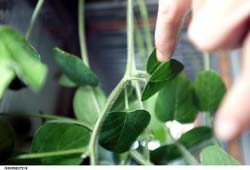Articles and reports from the Life Sciences and chemistry area deal with applied and basic research into modern biology, chemistry and human medicine.
Valuable information can be found on a range of life sciences fields including bacteriology, biochemistry, bionics, bioinformatics, biophysics, biotechnology, genetics, geobotany, human biology, marine biology, microbiology, molecular biology, cellular biology, zoology, bioinorganic chemistry, microchemistry and environmental chemistry.

New research from investigators in the Centre for Neuroscience Studies at Queen’s University and the Centre for Brain and Mind at The University of Western Ontario has provided the first neuro-imaging evidence that the brain’s frontal lobes play a critical role in planning and choosing actions.
Their study is published today in the journal Nature Neuroscience.
The research team has found that a small region in the frontal lobe of the human brain is selectively activated when

Biologists at the Farber Institute for Neurosciences at Thomas Jefferson University have shown for the first time in the laboratory that they can convert some adult human neural stem cells to brain cells that can produce dopamine, the brain chemical missing in Parkinson’s disease. If the researchers can better understand the process and harness this ability, the work may someday lead to new strategies in treating neurodegenerative diseases such as Parkinson’s.
Developmental biologist L

Like farmers across the nation bringing in their crops this season, researchers in Wisconsin are carefully taking stock of a very special harvest – one grown aboard the International Space Station.
They’ve measured and weighed plants, counted seeds, and collected additional physical information from the first-ever soybean crop grown aboard the orbiting research laboratory.
Now, the research team will begin several months of chemical and biological tests on the plants that w

Although it is expected that populations of many organisms will move away from the equator and toward the poles to stay cool during global warming, researchers have found that the intertidal zone does not exactly fit this pattern. A study published in this week’s Science Magazine indicates that there may be “hot spots” at northern shoreline sites within the next three to five years. This is partly due to the timing of the tides.
“Because they are assumed to live very close to their thermal

When you look at a picture, your brain has to put together lines, patterns and shapes to make a meaningful scene. New research by neuroscientists at the University of California, Davis and the University of Minnesota shows that higher regions of the brain can quickly recognize patterns and shapes and tell lower areas of the brain to stop processing the information. The finding confirms predictions from computer models and helps explain how the human brain makes sense of what the eyes see.
S

’Jurassic Chicken’ project may help studies of human development and evolution of dinosaurs
Scientists from the Keck School of Medicine of the University of Southern California have, for the first time, shown experimentally the steps in the origin and development of feathers, using the techniques of molecular biology. Their findings will have implications for the study of the morphogenesis of various epithelial organs-from hairs to lung tissue to mammary glands-and is already sheddin